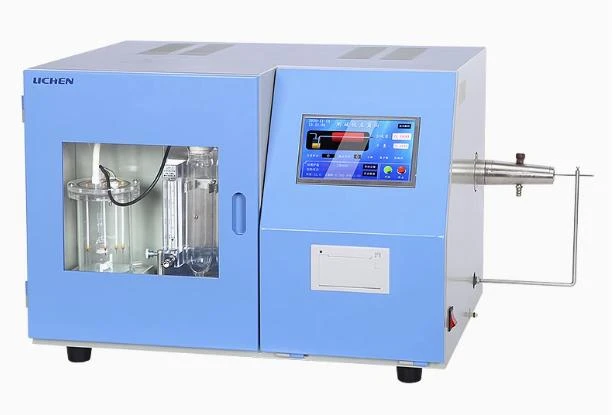TEL:
+86-0312-3189593
 English
English

Telephone:0312-3189593

Email:sales@oil-tester.com

-
 Afrikaans
Afrikaans -
 Albanian
Albanian -
 Amharic
Amharic -
 Arabic
Arabic -
 Armenian
Armenian -
 Azerbaijani
Azerbaijani -
 Basque
Basque -
 Belarusian
Belarusian -
 Bengali
Bengali -
 Bosnian
Bosnian -
 Bulgarian
Bulgarian -
 Catalan
Catalan -
 Cebuano
Cebuano -
 China
China -
 China (Taiwan)
China (Taiwan) -
 Corsican
Corsican -
 Croatian
Croatian -
 Czech
Czech -
 Danish
Danish -
 Dutch
Dutch -
 English
English -
 Esperanto
Esperanto -
 Estonian
Estonian -
 Finnish
Finnish -
 French
French -
 Frisian
Frisian -
 Galician
Galician -
 Georgian
Georgian -
 German
German -
 Greek
Greek -
 Gujarati
Gujarati -
 Haitian Creole
Haitian Creole -
 hausa
hausa -
 hawaiian
hawaiian -
 Hebrew
Hebrew -
 Hindi
Hindi -
 Miao
Miao -
 Hungarian
Hungarian -
 Icelandic
Icelandic -
 igbo
igbo -
 Indonesian
Indonesian -
 irish
irish -
 Italian
Italian -
 Japanese
Japanese -
 Javanese
Javanese -
 Kannada
Kannada -
 kazakh
kazakh -
 Khmer
Khmer -
 Rwandese
Rwandese -
 Korean
Korean -
 Kurdish
Kurdish -
 Kyrgyz
Kyrgyz -
 Lao
Lao -
 Latin
Latin -
 Latvian
Latvian -
 Lithuanian
Lithuanian -
 Luxembourgish
Luxembourgish -
 Macedonian
Macedonian -
 Malgashi
Malgashi -
 Malay
Malay -
 Malayalam
Malayalam -
 Maltese
Maltese -
 Maori
Maori -
 Marathi
Marathi -
 Mongolian
Mongolian -
 Myanmar
Myanmar -
 Nepali
Nepali -
 Norwegian
Norwegian -
 Norwegian
Norwegian -
 Occitan
Occitan -
 Pashto
Pashto -
 Persian
Persian -
 Polish
Polish -
 Portuguese
Portuguese -
 Punjabi
Punjabi -
 Romanian
Romanian -
 Russian
Russian -
 Samoan
Samoan -
 Scottish Gaelic
Scottish Gaelic -
 Serbian
Serbian -
 Sesotho
Sesotho -
 Shona
Shona -
 Sindhi
Sindhi -
 Sinhala
Sinhala -
 Slovak
Slovak -
 Slovenian
Slovenian -
 Somali
Somali -
 Spanish
Spanish -
 Sundanese
Sundanese -
 Swahili
Swahili -
 Swedish
Swedish -
 Tagalog
Tagalog -
 Tajik
Tajik -
 Tamil
Tamil -
 Tatar
Tatar -
 Telugu
Telugu -
 Thai
Thai -
 Turkish
Turkish -
 Turkmen
Turkmen -
 Ukrainian
Ukrainian -
 Urdu
Urdu -
 Uighur
Uighur -
 Uzbek
Uzbek -
 Vietnamese
Vietnamese -
 Welsh
Welsh -
 Bantu
Bantu -
 Yiddish
Yiddish -
 Yoruba
Yoruba -
 Zulu
Zulu
2 月 . 19, 2025 02:29
Back to list
power transformer tap changer operation
The operation of a power transformer tap changer is a critical component in the regulation of voltage levels in electrical power distribution systems. Understanding its function can provide significant insight into maintaining optimal performance and ensuring reliability in power delivery. Tap changers are integral in adapting to fluctuating demands and maintaining the efficiency of electrical grids.
It is equally important for operators to have an authoritative understanding of the safety protocols associated with tap changer operation. This involves managing arc suppression in OLTCs, handling dielectric insulation, and ensuring grounding procedures are followed. Mismanagement can lead to catastrophic failures, including transformer fires or system blackouts, underscoring the necessity for skilled personnel in operations. Tap changers significantly influence the economic aspect of power systems. A malfunction or inefficient operation can lead to increased operational costs and reduce the lifespan of the transformer. It is thus vital that operators invest in state-of-the-art monitoring and diagnostic tools. Thermal imaging, dissolved gas analysis, and online monitoring systems are indispensable tools that aid in preemptive maintenance, enabling operators to detect issues before they culminate into failures. Investments in advanced tap changer designs are ongoing, with innovations focusing on increasing the number of permissible operations, minimizing maintenance requirements, and enhancing arc suppression techniques. Solid-state tap changers represent a potential future direction, offering seamless voltage regulation with reduced mechanical wear and lower maintenance demands. In conclusion, the operation of power transformer tap changers is a sophisticated blend of technical acumen and strategic planning. It demands experts who are knowledgeable about both the theoretical principles and practical applications of electromechanical systems. Maintaining trust in power delivery systems requires a robust framework of operations and maintenance, underscoring the critical role that tap changers play in the broader context of energy distribution.


It is equally important for operators to have an authoritative understanding of the safety protocols associated with tap changer operation. This involves managing arc suppression in OLTCs, handling dielectric insulation, and ensuring grounding procedures are followed. Mismanagement can lead to catastrophic failures, including transformer fires or system blackouts, underscoring the necessity for skilled personnel in operations. Tap changers significantly influence the economic aspect of power systems. A malfunction or inefficient operation can lead to increased operational costs and reduce the lifespan of the transformer. It is thus vital that operators invest in state-of-the-art monitoring and diagnostic tools. Thermal imaging, dissolved gas analysis, and online monitoring systems are indispensable tools that aid in preemptive maintenance, enabling operators to detect issues before they culminate into failures. Investments in advanced tap changer designs are ongoing, with innovations focusing on increasing the number of permissible operations, minimizing maintenance requirements, and enhancing arc suppression techniques. Solid-state tap changers represent a potential future direction, offering seamless voltage regulation with reduced mechanical wear and lower maintenance demands. In conclusion, the operation of power transformer tap changers is a sophisticated blend of technical acumen and strategic planning. It demands experts who are knowledgeable about both the theoretical principles and practical applications of electromechanical systems. Maintaining trust in power delivery systems requires a robust framework of operations and maintenance, underscoring the critical role that tap changers play in the broader context of energy distribution.
Previous:
Latest news
-
Testing Equipment Industry Sees Major Advancements in 2025: Smart & Precision Technologies Lead the WayNewsJun.06,2025
-
Applications of Direct Current Generators in Renewable Energy SystemsNewsJun.05,2025
-
Hipot Tester Calibration and Accuracy GuidelinesNewsJun.05,2025
-
Digital Circuit Breaker Analyzer Features and BenefitsNewsJun.05,2025
-
Benefits of Real-Time Power Quality Monitoring Devices for Industrial EfficiencyNewsJun.05,2025
-
Earth Fault Loop Testing in High-Rise Building Electrical SystemsNewsJun.05,2025



